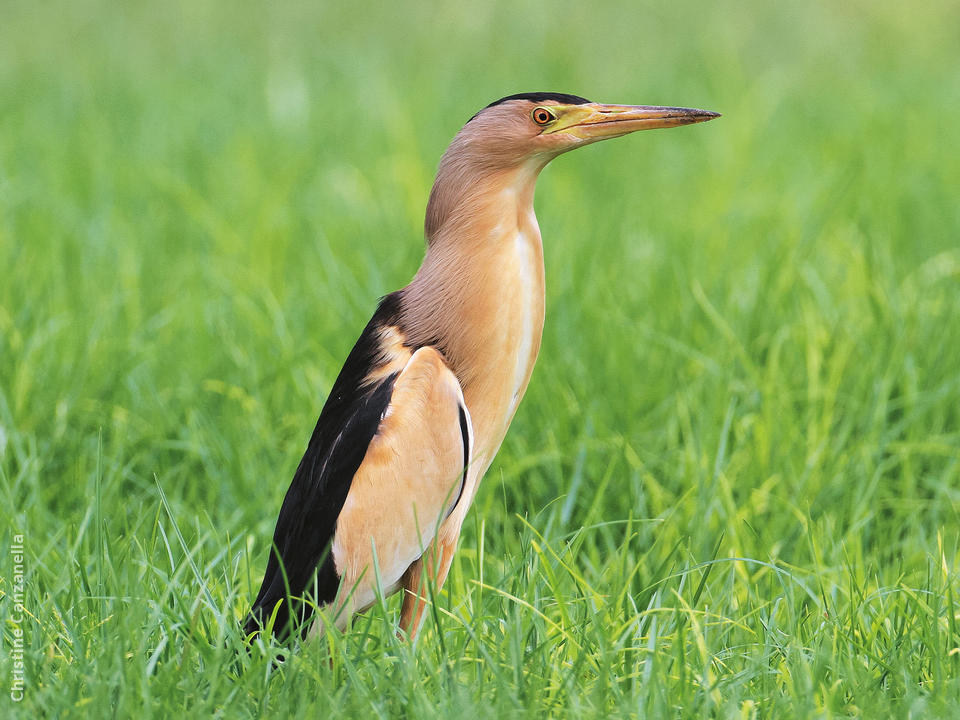
Little Bittern
Ixobrychus minutus
Order:
Family:
Size:
27-38 cm
Weight:
59-150 g
Taxonomy:
I. m. minutus (Linnaeus, 1766)
Short Description:
The little bittern or common little bittern (Ixobrychus minutus) is a wading bird in the heron family, Ardeidae. Ixobrychus is from Ancient Greek ixias, a reed-like plant and brukhomai, to bellow, and minutus is Latin for "small". This bittern is native to the Old World, breeding in Africa, central and southern Europe, western and southern Asia, and Madagascar. Birds from temperate regions in Europe and western Asia are migratory, wintering in Africa and further south in Asia, while those nesting in the tropics is sedentary. It is rare north of its breeding range. It is a very small bittern; measuring 25–36 cm (9.8–14.2 in) in length, 40–58 cm (16–23 in) across the wings and weighing 59–150 g (2.1–5.3 oz). It is among the smallest heron species. It has a short neck, longish bill, and buff underparts. The male's back and crown are black, and the wings are black with a large white patch on each wing. The female has a browner back and a buff-brown wing patch. The little bittern's breeding habitat is reed beds. It nests on platforms of reeds in shrubs, and four to eight eggs are laid. It can be difficult to see, given its skulking lifestyle and reedbed habitat. These bitterns feed on fish, insects, and amphibians. In Pakistan Little Bittern is considered as the rare resident, breeding in lower Siind, Balouchistan, and Kohat. Prefers tall red-beds and permanent wetlands with submerged trees and bushes for nesting.
Far far away, behind the word mountains, far from the countries Vokalia and Consonantia, there live the blind texts. Separated they live in Bookmarksgrove right at the coast
Bahawalpur,Kasur,Multan,Attock,Hafizabad,Khushab,Okara,Rawalpindi,Sialkot,Dadu,Hyderabad,Jacobabad,Karachi Central,Sanghar,Sukkur,Thatta,Karachi East,Karachi South,Karachi West,Kurram,Haripur,Kohat,Chitral,Swat,Pishin
Mainly active around dawn and dusk, but also feeds during day. Feeds alone, either by standing motionless or walking slowly partially hidden amidst vegetation; defends feeding territory. Feed principally on fish, also insectivorous, taking aquatic insects and their larvae, crickets, grasshoppers, caterpillars, beetles, etc. Also feeds on worms, spiders, molluscs, crustaceans and small vertebrates.
Far far away, behind the word mountains, far from the countries Vokalia and Consonantia, there live the blind texts. Separated they live in Bookmarksgrove right at the coast
About Photographer : Hello World
Facebook
Twitter
Instagram
Flicker
LinkedIn


